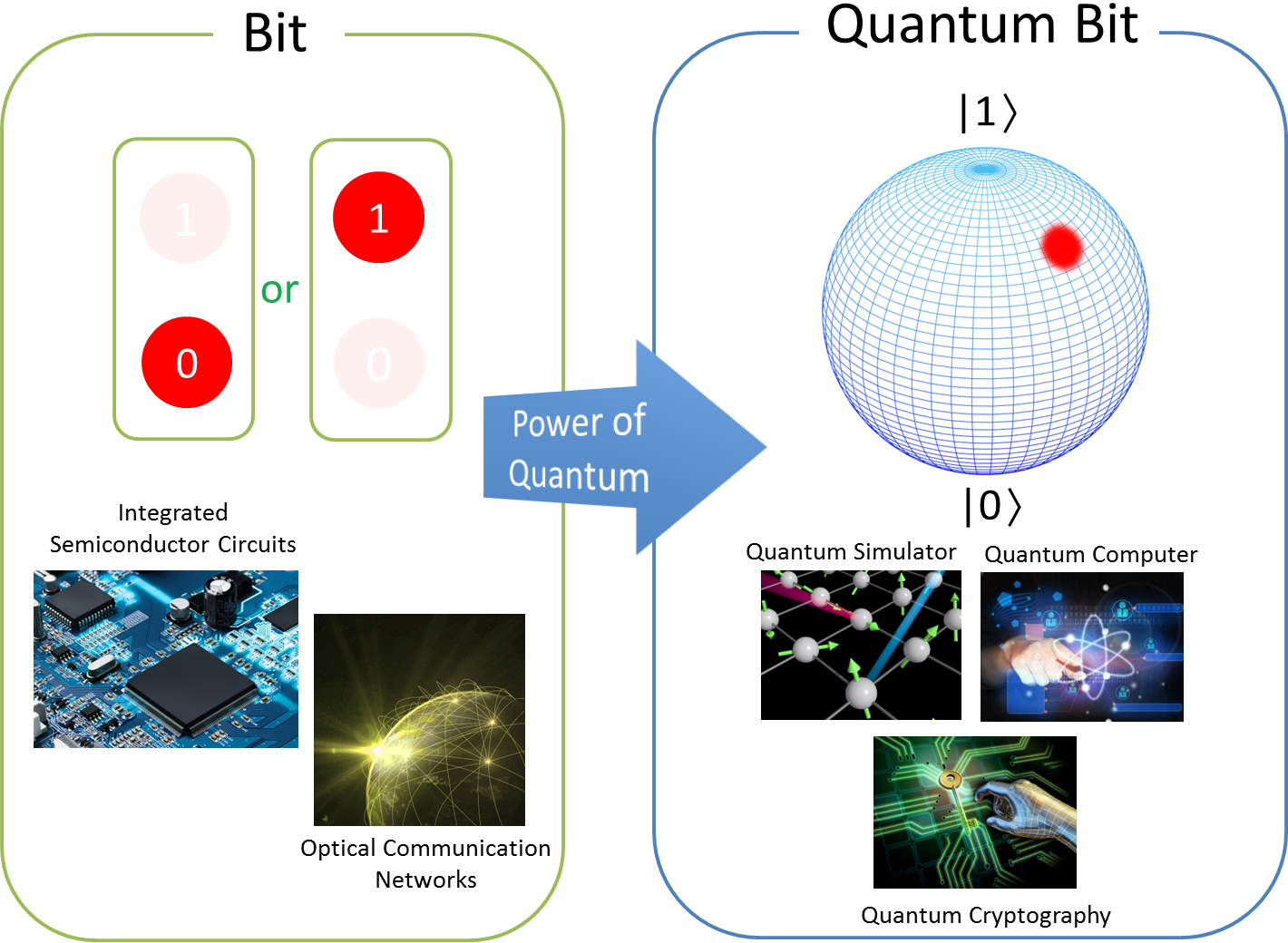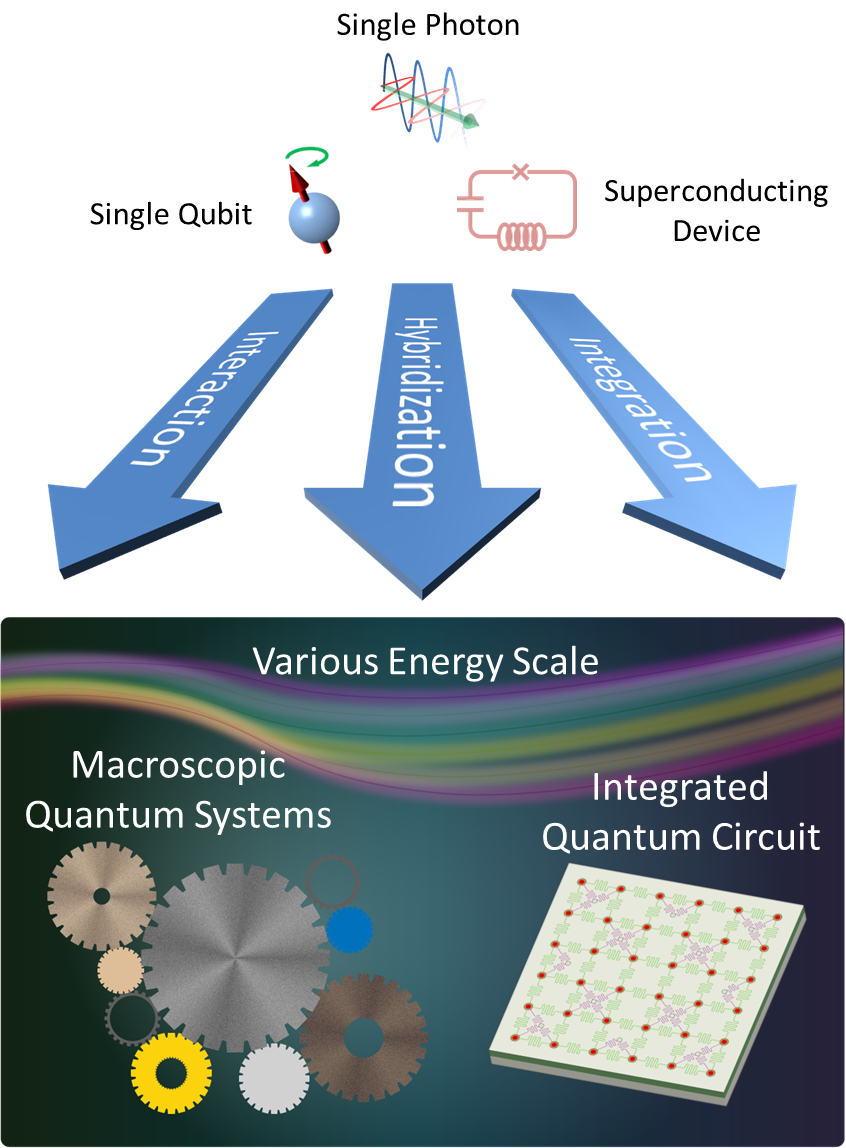Our ERATO Macroscopic Quantum Machines Project aims at building a platform for future information processing technologies based on the principles of quantum mechanics.
Quantum mechanics has been developed as one of the most fundamental theories in physics and has become a basis for advancement in many fields of science. It has essentially contributed to the developments of integrated semiconductor circuits and optical communication networks, found at every corner of our IT world. On the other hand, quantum information science is a newly emergent concept, suggesting even more sophisticated uses of quantum mechanics.
Quantum mechanics is already used in understanding and designing the operation principles of elementary devices such as transistors and lasers in conventional information technologies. However, at the level of information processing, it does not play any explicit role. Contrarily, in quantum information science, the strange properties of quantum states, such as superposition and entanglement, will be fully exploited in unprecedented technologies including quantum computing, quantum simulation, quantum cryptography, etc. There, we use quantum bits, instead of bits, as a unit of information.

However, we are still facing many technical challenges before realizing quantum information technologies. For example, in order to preserve states of quantum bits for a long time and manipulate them precisely, we need to suppress errors induced by noise. To overcome problems and operate “quantum machines” properly, we approach both from hardware (experimental) and software (theoretical) aspects.
The word ‘macroscopic’ has three meanings:
All in all, these machines will improve our understanding of quantum mechanics and find applications in quantum information science.

In our daily lives, we do not and do not have to care about quantum mechanical behaviors of any electrical circuits. However, if we design superconducting circuits properly and operate them in a low-temperature and low-noise environment, we readily find their quantum mechanical properties. In 1999, Yasunobu Nakamura, the Project Manager of this ERATO project, and his colleagues demonstrated the first superconducting qubit. Since then, properties of superconducting qubits have been improved tremendously, leading to on-going global intensive research activities towards integrated superconducting quantum circuits.
Full and long-lasting quantum state control in an integrated qubit system is an unachieved challenging goal, which we are aiming at in our Macroscopic Quantum Machines Project.